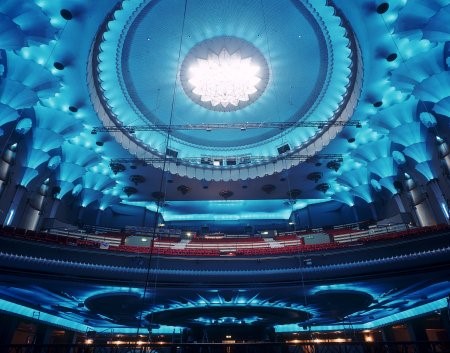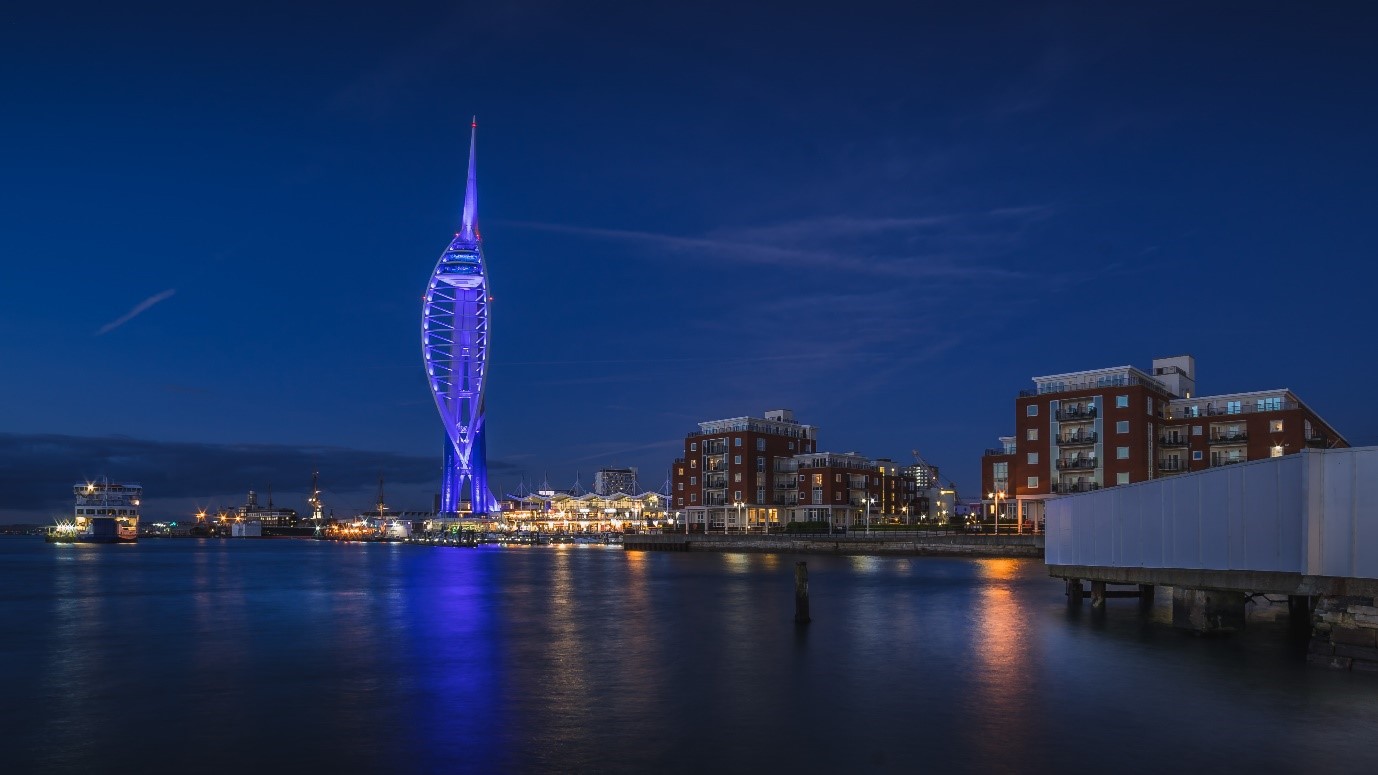Insights
Boundary-shattering entertainment and architectural lighting.
Illuminating experiences that bridge the gap.
Goosebumps. Racing pulses. Shivers down the spine. We have all experienced that moment at an event, exhibition or concert where the euphoria builds to such a peak that it is almost spiritual.
The body responds physically to a multi-sensory stimulus and the psychological experience this stimulus triggers. Quite often that experience is built with light; our vision being the main sense that we use when we experience a space.
Light has always been an emotive energy. It is one of the reasons that cathedrals installed stained glass windows; reinforcing to visitors the ethereal, divine power and beauty of God through messages conveyed with pictorial symbols and narrative scenes. They removed views of the outside and dappled the interior with a changeable, moving ballet of colour and light. With no reference to the day-to-day reality beyond the church doors, and the vibrancy of the coloured light, it must have felt awe inspiring to medieval people living largely modest lives.
This is why I love light as a medium for creativity. Not just because you can create amazing spaces, but that people react to light experiences in such palpable and personal ways.
The power of light

With modern light sources and controls, the gap between entertainment lighting and architectural lighting has all but disappeared, and in a world where everything has to compete with the dopamine kick of social media, creating an experience has never been more important.
Light has always been an emotive energy. It is one of the reasons that cathedrals installed stained glass windows; reinforcing to visitors the ethereal, divine power and beauty of God
For many of us, modern venues are our churches
The modern performance venue should be a place of wonder. It should no longer be a black box into which a stage set can be rigged, but part of the experience which starts as you approach the venue and enter the foyer, all the way into the auditorium itself. Now, we are more part of the performance than ever before, with phones and infrared wristbands allowing us to form a closer interaction with the artists, but rarely does the auditorium itself make for an additional interaction.
Whether it is e-sports, auditoria, theatres, or collective entertainment districts, the opportunity for the ‘architectural lighting’ to form the experience, and thus draw people to the venue, is huge. Yet the role of architectural light is sometimes seen as simply providing safe movement; the ‘entertainment light’ is an additional layer added by the visiting stage designers. This is a missed opportunity not only because you end up with competing systems but also because it means the venue misses the opportunity to be part of the experience.
In a world where everything has to compete with the dopamine kick of social media, creating an experience has never been more important
More than ever, we need something which bridges the gap. Theatre or stage lighting is too expensive, too inefficient and not durable enough for architectural lighting, but architectural lighting is controllable and durable enough.
I think what we are discussing could be described as ‘experiential illumination’. This is light that forms the basis of how a venue is illuminated but can also form part of the overall experience of a space. It facilitates what happens on stage, or on the pitch, or in the exhibition space to ripple out to all areas of the venue. It can be interacted with by the stage lighting designers or synced with Audio Visual soundscapes to create a fully immersive experience, but it remains as a hard-wired system which, when needed, can provide safety and security lighting.



[Experiential illumination] is light that forms the basis of how a venue is illuminated but can also form part of the overall experience of a space
Placemaking
It is not just venues which could use the ‘experiential illumination’ approach. It is a great way of attracting people to spaces, announcing sites and creating distinct brands.
The Spinnaker Tower sits on the mouth of Portsmouth harbour and acts as a beacon for incoming ships and the community that it proudly announces. In 2019 we were commissioned to re-consider the illumination of the tower which proved to be a great opportunity to test the interactive and emotive power of light as a way of enhancing a city’s brand.
The solution is more responsive than ever before, allowing greater manipulation of light through user-friendly interfaces. The re-light has reinvigorated the harbour and the local community and re-instated the tower as a destination for Portsmouth and its proud naval heritage.

And it doesn’t have to be to the detriment of the environment. At the design stage we started discussing informal environmental risk assessments that allowed us to assess and measure the impacts. If a solution was negative in terms of impact, we didn’t consider it. We were able to illuminate Spinnaker Tower using less energy and creating less spilled upward light due to the more controlled nature of the LED sources.
Light as a global branding tool
In a world of experiences, light is a powerful tool for connecting spaces and places with local and national communities. The Spinnaker Tower forms part of Portsmouth’s annual events calendar with light shows to suit. It celebrates Pride, Breast Cancer Awareness, Remembrance Day and others. It has appeared in yellow as part of Children in Need and as a backdrop to Ant & Dec’s Saturday Night Takeaway. The local community can apply to have specific colours for various celebrations. The illumination of the tower puts brand Portsmouth on the map.
Illuminated architecture now forms part of the communication network, with buildings sending messages of solidarity around the world following major events. We connect with them and they connect with us. It brings new meaning to the phrase; ‘if these walls could talk’.
Whether it is involving a venue in celebrating performance, or a piece of placemaking architecture which responds to a global community, light is the medium that facilitates.
And ‘experiential illumination’ is the methodology – the ethos – that enables it.
